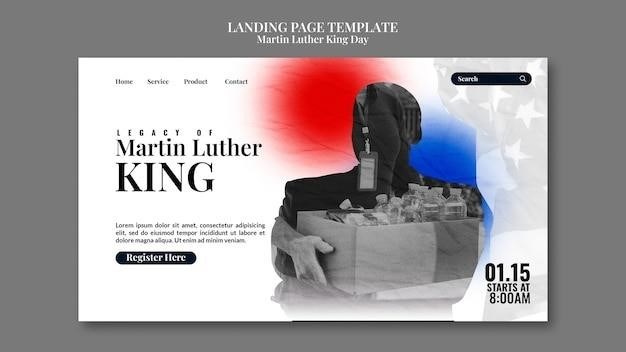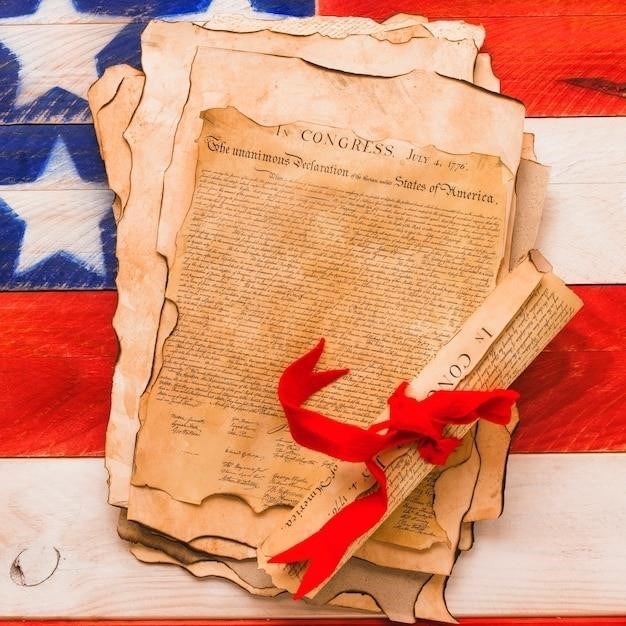
The Collapse of the Roman Republic
The Roman Republic, a system of government that lasted for centuries, ultimately collapsed due to a complex interplay of factors. Internal strife, including a series of devastating civil wars, eroded the foundations of the Republic. The rise of powerful individuals like Julius Caesar, Pompey, and Octavian, who sought to consolidate power, further undermined republican ideals. Economic and social inequalities, including the growth of slavery and the widening gap between the wealthy elite and the common people, contributed to political instability. The decline of traditional republican values, such as civic virtue and public service, also played a role in the Republic’s demise. Ultimately, the transition to the Roman Empire, with Augustus as the first emperor, marked the formal end of the Republic in 27 BCE.
Introduction
The Roman Republic, a beacon of democracy and republicanism for centuries, ultimately succumbed to internal strife and a gradual erosion of its core principles. The story of its fall, chronicled in countless historical accounts, is a compelling testament to the fragility of political systems and the enduring human struggle for power. This exploration delves into the complexities of the Roman Republic’s decline, examining the key events, figures, and underlying forces that contributed to its demise. From the tumultuous rise of powerful individuals to the devastating impact of civil wars, the Republic’s story reveals a fascinating tapestry of political intrigue, social unrest, and the ultimate triumph of imperial authority.
This document, intended for those seeking a deeper understanding of the Roman Republic’s collapse, will delve into the intricate web of factors that led to its downfall. It will explore the role of civil wars in fracturing the Republic, the rise of strongmen who sought to seize power, and the impact of economic and social inequalities. Furthermore, it will examine the decline of traditional republican values and the transition from a republic to an empire. By analyzing these critical elements, this document aims to provide a comprehensive overview of the factors that contributed to the demise of the Roman Republic.
Key Events and Figures
The collapse of the Roman Republic was a tumultuous process marked by a series of pivotal events and the rise of influential figures who played a significant role in shaping the Republic’s destiny. The assassination of Julius Caesar in 44 BCE, a turning point in Roman history, triggered a power vacuum and unleashed a period of intense civil war. The ensuing conflict between Caesar’s assassins and his allies, led by Mark Antony and Octavian, further destabilized the Republic. The Second Triumvirate, formed by Octavian, Antony, and Lepidus, temporarily restored order but ultimately led to further clashes and the demise of the Republic.
Among the key figures who shaped the Republic’s decline were Julius Caesar, a brilliant general and statesman who sought to reform the Republic but ultimately became a target of his political rivals. Pompey the Great, a renowned military leader, played a pivotal role in the power struggles that led to the Republic’s collapse. Mark Antony, a close associate of Caesar, became a central figure in the power struggles after Caesar’s death. Octavian, Caesar’s adopted son and heir, emerged as a powerful leader and ultimately established the Roman Empire. These figures, with their ambitions, alliances, and rivalries, became instrumental in the Republic’s demise.
The Role of Civil Wars
The Roman Republic was plagued by a series of devastating civil wars that significantly contributed to its downfall. These conflicts, often fueled by political ambitions, personal rivalries, and the struggle for power, eroded the fabric of the Republic and left it deeply divided. The Social War (91-88 BCE), a conflict between Rome and its Italian allies, exposed the fragility of the Republic’s political system and weakened its authority. The First Civil War (83-82 BCE), fought between Sulla and Marius, further destabilized the Republic and left it in a state of chaos.
The Second Civil War (49-45 BCE), between Caesar and Pompey, marked a turning point in the Republic’s decline. Caesar’s victory in the war, while establishing him as the most powerful figure in Rome, ultimately led to his assassination and the outbreak of a new round of civil war. The Third Civil War (43-36 BCE), between the Second Triumvirate and Caesar’s assassins, further intensified the Republic’s struggles and ultimately paved the way for Octavian’s rise to power. These civil wars, with their widespread violence and instability, left the Republic fractured and vulnerable, paving the way for its eventual collapse.
The Rise of Strongmen
The Roman Republic’s decline was marked by the emergence of powerful individuals who sought to consolidate their authority and circumvent the traditional system of checks and balances. These “strongmen,” as they are often called, exploited the political instability and the growing dissatisfaction with the Republic’s inefficiencies to amass power and influence. Figures like Sulla, Pompey, and Caesar, each in their own way, challenged the established political order and ultimately contributed to the Republic’s demise. Sulla, through his successful military campaigns and ruthless political tactics, established himself as a dictator, effectively bypassing the established institutions of the Republic.
Pompey, through his military prowess and political maneuvering, amassed significant influence and power, becoming a dominant force in Roman politics. Caesar, known for his military genius and political ambition, ultimately crossed the Rubicon, leading to civil war and his own rise to supreme power. The rise of these strongmen, with their ambitions and disregard for traditional republican principles, weakened the Republic’s institutions and paved the way for its eventual collapse. Their actions demonstrated the growing fragility of the Republic’s system and the allure of individual power in a time of crisis.
The Impact of Economic and Social Factors
The Roman Republic’s economic and social landscape was marked by growing inequality and instability, factors that played a significant role in its demise. The expansion of the Roman Empire led to the influx of wealth, but this wealth was unevenly distributed, creating a widening gap between the wealthy elite and the common people. The growing reliance on slave labor further exacerbated this divide, as it displaced free laborers and contributed to a decline in the middle class. The accumulation of wealth in the hands of a few fueled social unrest and political instability, as the common people struggled to make ends meet.
The economic system, based on agriculture and trade, also faced challenges. The influx of cheap grain from conquered territories disrupted Roman agriculture, leading to economic hardship for farmers. The expansion of Roman territory, while bringing in wealth, also created logistical challenges, straining the Republic’s infrastructure and resources. These economic and social challenges created a fertile ground for political discontent and ultimately contributed to the erosion of the Republic’s foundations. The growing inequality and economic instability weakened the social fabric of the Republic and paved the way for the rise of strongmen who promised solutions but ultimately further destabilized the system.
The Decline of Republican Values
The Roman Republic was founded on principles of civic virtue, public service, and the rule of law. These values, which had guided the Republic through centuries of success, began to erode during the later stages of its existence. The pursuit of personal wealth and power increasingly eclipsed the ideals of public service and the common good. The rise of ambitious individuals, like Julius Caesar, who sought to consolidate power and circumvent the established institutions, further eroded these values. The Senate, once a symbol of republican governance, became increasingly divided and ineffective in governing the Republic, as political factions vied for control.
The increasing reliance on military force to resolve political disputes also contributed to the decline of republican values. The Roman army, originally a citizen militia, evolved into a professional force with its own loyalties and interests. This shift in the military’s role further weakened the Republic’s institutions and undermined the principle of civilian control of the military. The erosion of republican values, coupled with the increasing influence of ambitious individuals and the militarization of politics, created a climate of instability that ultimately led to the collapse of the Republic and the emergence of a new political order.
The Transition to Empire
The final stages of the Roman Republic were marked by a series of civil wars, culminating in the rise of Octavian, the adopted son of Julius Caesar. Following the assassination of Caesar in 44 BCE, Octavian, alongside Mark Antony and Marcus Lepidus, formed the Second Triumvirate to restore order. However, the triumvirate eventually dissolved, leading to a power struggle between Octavian and Antony. Octavian emerged victorious in the decisive Battle of Actium in 31 BCE, effectively ending the Republic. In 27 BCE, the Roman Senate bestowed upon Octavian the title of Augustus, marking the formal transition to the Roman Empire.
Augustus skillfully navigated the transition, maintaining a façade of republican institutions while consolidating his power. He established a new political order, known as the Principate, where the emperor held supreme authority but still relied on the Senate and other traditional institutions. The Principate, while a departure from the Republic, provided stability and continuity for the Empire for centuries. The transition from the Republic to the Empire was a complex and tumultuous process, shaped by the ambitions of individuals, the collapse of republican values, and the enduring need for order and stability in a vast and complex state.
The Legacy of the Roman Republic
Despite its ultimate collapse, the Roman Republic left an indelible mark on Western civilization. Its political institutions, legal system, and cultural achievements have profoundly influenced the development of democracy, law, and art throughout history. The Republic’s emphasis on civic virtue, public service, and the rule of law served as a model for later republics, including the United States. The Roman Republic’s legal system, codified in the Twelve Tables, established principles of justice and fairness that continue to shape legal systems around the world.
Roman literature, art, and architecture, produced during the Republic and the Empire, had a lasting impact on European culture. The Republic’s contributions to military strategy and engineering, such as the Roman legions and the construction of roads and aqueducts, have left a lasting legacy on military science and infrastructure development. The Republic’s influence can be seen in the political systems, legal frameworks, and cultural expressions of many modern nations, demonstrating the enduring impact of this remarkable period in history.
The Fall of the Roman Republic in Literature and History
The fall of the Roman Republic has been a subject of fascination for historians and writers for centuries. From ancient Roman historians like Plutarch and Livy to modern scholars, the collapse of this once mighty republic has been meticulously documented and analyzed. Plutarch’s “Lives of the Noble Grecians and Romans” offers a captivating account of the lives and actions of key figures involved in the Republic’s decline, providing insights into the political machinations and personal rivalries that led to its downfall. Livy, in his “History of Rome,” presents a detailed narrative of the Republic’s rise and fall, highlighting the social, political, and military factors that contributed to its demise.
In modern times, historians continue to explore the complex causes of the Republic’s collapse. Works like Edward Gibbon’s “The History of the Decline and Fall of the Roman Empire,” while focusing on the broader decline of the Roman Empire, offer valuable perspectives on the Republic’s final years. Contemporary scholars like David Shotter, in his book “The Fall of the Roman Republic⁚ A New History,” provide fresh interpretations of the events that led to the Republic’s demise, drawing on recent scholarship and archaeological discoveries. The fall of the Roman Republic continues to be a topic of enduring interest, prompting ongoing research and debate among historians and scholars.
The Roman Republic in Modern Political Discourse
The fall of the Roman Republic continues to resonate in modern political discourse, serving as a cautionary tale and a source of inspiration for contemporary political thought. Many scholars and commentators draw parallels between the Republic’s decline and contemporary political trends, highlighting the dangers of political polarization, the rise of populist leaders, and the erosion of democratic institutions. The Republic’s collapse, often attributed to the rise of powerful individuals seeking to consolidate power, serves as a warning against the potential for unchecked ambition and the dangers of political instability.
Furthermore, the Republic’s demise is frequently cited as an example of the fragility of democratic institutions and the importance of civic virtue and public service. The decline of traditional republican values, such as consensus-building and compromise, is seen as a contributing factor to the Republic’s collapse, emphasizing the need for a strong commitment to democratic principles and the importance of a well-informed and engaged citizenry. The Roman Republic’s fall serves as a reminder of the importance of maintaining a balance of power, preventing the concentration of power in the hands of a few, and fostering a political culture that values compromise and respect for the rule of law.
The Enduring Lessons of the Roman Republic
The collapse of the Roman Republic offers a wealth of enduring lessons for modern societies. The Republic’s downfall serves as a stark reminder of the fragility of democratic institutions and the importance of safeguarding them against the threats of political instability, unchecked ambition, and the erosion of civic virtue. The Republic’s history highlights the dangers of political polarization, the rise of powerful individuals seeking to consolidate power, and the consequences of neglecting the needs of the common people.

The Roman Republic’s experience emphasizes the importance of fostering a political culture that values compromise, consensus-building, and the rule of law. It underscores the need for a strong commitment to democratic principles, including the separation of powers, checks and balances, and the protection of individual rights. Furthermore, the Republic’s fall serves as a cautionary tale about the dangers of economic inequality and the importance of addressing social and economic issues to prevent societal unrest. By studying the Republic’s demise, modern societies can gain valuable insights into the challenges of maintaining a stable and prosperous democracy.
The collapse of the Roman Republic stands as a monumental turning point in history, marking the end of a remarkable era of republican governance and ushering in the Roman Empire. While the Republic’s demise was a complex process, driven by a convergence of political, social, and economic factors, its legacy continues to resonate through the ages. The Republic’s rise and fall provide a compelling narrative of power, ambition, and the enduring struggle to balance individual aspirations with the common good.
The Republic’s legacy serves as a potent reminder of the challenges of maintaining a stable and just society, emphasizing the need for strong institutions, responsible leadership, and a citizenry committed to civic virtue. The Republic’s history offers valuable lessons for modern societies grappling with similar issues, reminding us of the importance of safeguarding democratic principles, fostering social cohesion, and addressing economic inequalities to ensure a more just and equitable future.

Further Reading
For those eager to delve deeper into the intricacies of the Roman Republic’s collapse, a wealth of scholarly works awaits. “The Roman Revolution” by Ronald Syme provides a comprehensive analysis of the political and social upheavals that shook the Republic. “The Fall of the Roman Republic” by Adrian Goldsworthy offers a compelling narrative of the key events and figures that led to the Republic’s demise. “The Collapse of the Roman Republic” by Don Nardo presents a concise and accessible overview of the Republic’s decline.
For a broader historical context, “The History of the Decline and Fall of the Roman Empire” by Edward Gibbon remains a seminal work, providing insightful observations on the Republic’s transition to empire. “The Roman Republic” by H.H. Scullard offers a thorough examination of the Republic’s institutions, society, and culture. For a more focused study of the Republic’s final decades, “The Roman Republic, 133-27 BC” by A.H.M. Jones provides a detailed analysis of the political and military events that led to the Republic’s downfall.





No comment yet, add your voice below!